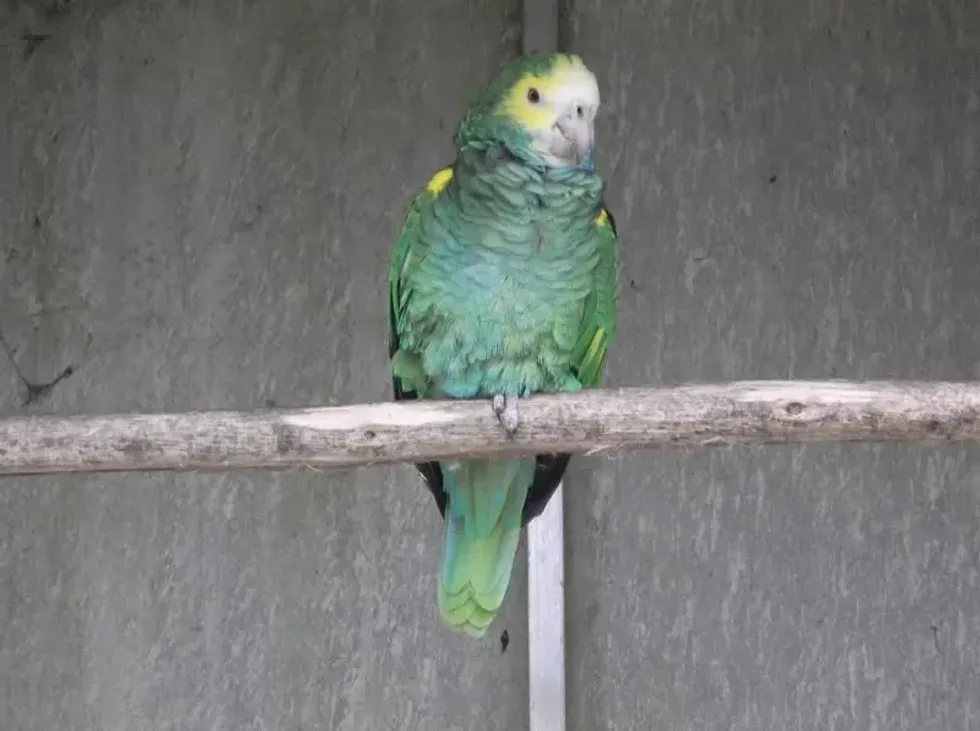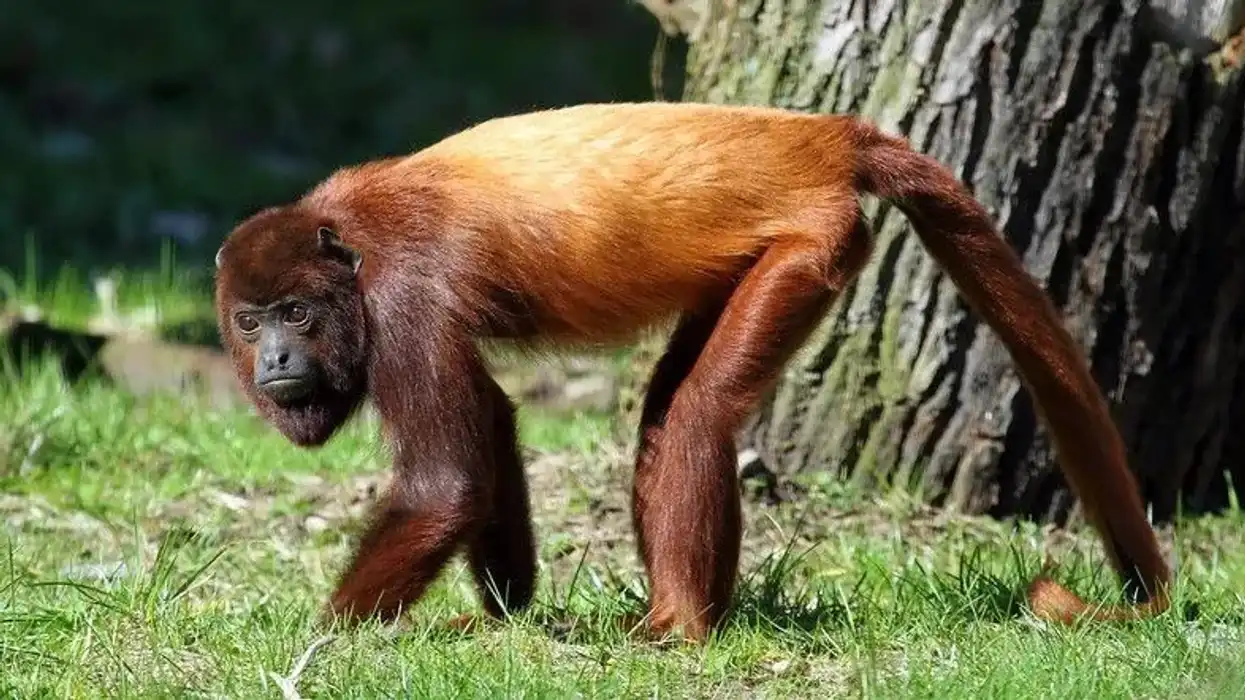A yellow-shouldered amazon (Amazona barbadensis) belongs to a species of birds, and it is found in the coastal regions of Venezuela and northern Venezuela. It is also found living on the island of Blanquilla, Margarita, and Bonaire.
The conservation status of the shouldered amazon (the yellow one) has been declared as Vulnerable.
Various conservation programs have been initiated on the island of Bonaire to facilitate the protection of these amazon yellow birds. The main reasons behind their decreasing population are the destruction of nesting sites because of poaching, habitat loss due to the increasing tourism, and degradation of the resources of nature.
Speaking of the behavior of these yellow shoulders birds, they are considered to be very intelligent, curious, and assertive. The males tend to become aggressive. These yellow shoulders are also considered to be very active by nature.
Once the breeding season starts, both the male bird and the female bird start building their nests. The female bird lays about three to four eggs. Both the male and female co-parent the chick and provide it with a good diet.
Yellow-shouldered birds usually have green plumage with hints of blue and yellow. Their beak is horn-colored.
In its range, what distinguishes it from the other birds from the Amazona species, are its yellow shoulder patch and extensive yellow on the head. It also has white eye rings and red patches on the wing. Several other Amazona species have much more yellow on their head and forehead.
Here on our page, we have lots of interesting facts on the yellow-shouldered amazons that everyone will enjoy. So let's have a look at these interesting facts, and if you do like these, then read our hairy woodpecker and summer tanager facts.
Yellow-Shouldered Amazon Interesting Facts
What type of animal is a yellow-shouldered amazon?
Yellow shouldered amazons are a type of amazon parrots that are mostly green and yellow. It is a large green parrot found in the coastal regions of Venezuela.
What class of animal does a yellow-shouldered amazon belong to?
The yellow-shouldered amazon (Amazona barbadensis) belongs to the class Aves. The populations of these Amazon parrots are restricted to the coastal regions of Venezuela and are also located in the certain islands of Blanquilla, Margarita, and Bonaire.
How many yellow-shouldered amazons are there in the world?
According to certain studies conducted, the reported population of the yellow-shouldered amazon as of the year 2020 is over 1200 amazon parrots. The estimated world population of this species of breeding parrots is about 2,590-8,470.
Where does a yellow-shouldered amazon live?
The basic habitat of a yellow-shouldered amazon (Amazona barbadensis) is the coastal and desert scrub areas around certain parts of Venezuela, Northern Venezuela, and offshore islands. In addition, they are often located on certain islands of Blanquilla, Margarita, and Bonaire (Netherlands Antilles), also found living on Margarita.
What is a yellow-shouldered amazon's habitat?
This yellow-shouldered parrot is found living in the desert scrub areas, cultivated areas, and around mangroves. These parrots with yellow shoulders are basically seen in areas with cacti and thorny bush and trees. They are also spotted breeding on certain islands. The population of this species of parrots has also been seen nesting in tree cavities and limestone cliffs.
Who does yellow shouldered amazon live with?
Yellow shouldered amazons are seen living with species of their own kind. They are seen traveling in flocks of 100 and also seen in pairs and families.
How long does a yellow-shouldered amazon live?
The lifespan of this yellow-shouldered parrot is about 50 to 60 years.
How do they reproduce?
The breeding season of the yellow-shouldered amazons takes place between March-September. The average clutch size of these birds is about three to four. The incubation period is nearly about 24-26 days. Once the eggs are hatched, the chicks usually fledge at approximately 10-12 weeks of age. Not much else is known about their reproduction.
What is their conservation status?
According to the IUCN, the conservation status of the yellow-shouldered amazons is declared as Vulnerable. This means that they are under the threat of becoming endangered or even extinct.
The current population of this species of bird is around 2,590-8,470 breeding birds. Their population is continuously declining due to habitat loss, overhunting, and attacks from mammalian predators. Various programs have been appointed in the region of Bonaire towards the protection of these birds.
Yellow-Shouldered Amazon Fun Facts
What does yellow-shouldered amazon look like?
A yellow-shouldered amazon is green in color, with a yellow face and an orange wing patch. They have faces variably colored with blue. The adults also tend to have fine black scalloping on feathers.
Their primary and secondary feathers are yellowish-green in color with blue tips. Speaking of their tail feathers, they are green in color with yellowish tips.
They have a distinctive horn-colored beak. The juveniles have less yellow on the head and are duller in color as compared to the adults. They have a visible white forehead with some hints of blue.
How cute are they?
Whether these parrots are cute or not is subjective. Some may find them cute, while some may not. However, keeping in mind that they are considered a very beautiful species of parrots found in South America, many people do find them cute.
How do they communicate?
A yellow-shouldered amazon parrot communicates by making loud and raucous sounds. They are known to be less musical than the other Amazons.
How big is a yellow-shouldered amazon?
A yellow-shouldered amazon parrot has a length in the range of about 12.2-12.9 in (31-33 cm) long in size from the head to the tip of the tail. This bird is about six times bigger than a rat.
How fast can a yellow-shouldered amazon fly?
The exact speed of this parrot is not known, but they are said to have a speed similar to the species of parrot between 81-200 mph (130.3-321.8 kph).
How much does a yellow-shouldered amazon weigh?
The yellow-shouldered amazons weigh about 9.5 oz (270 g). They are around four times bigger than the great kiskadee.
What are the male and female names of the species?
The male and female of this species are commonly known as male yellow shouldered amazon and female yellow shouldered amazon, respectively.
What would you call a baby yellow-shouldered amazon?
A baby Amazon (the yellow-shouldered parrot) is called a juvenile, hatchling, or chick.
What do they eat?
Yellow shouldered amazons' diet comprises fruits from cactus plants, seeds, and nectar-rich flowers. Some of the seeds and fruits that this species of yellows shoulders are seen feeding upon are apple, pear, orange, banana, mixed seeds, cooked beans, and pulses.
Are they dangerous?
No, they are not dangerous. They are harmless.
Would they make a good pet?
They make great pets because they have very engaging, jovial, and active personalities and behavior. They are very playful and curious, and if they are to be placed in a cage, these pets need a lot of toys to play with and wooden blocks that they can chew.
Therefore, this pet should always be held under great supervision.
These birds cost around $2,000-$3,000 if you want to buy this pet from a breeder. However, owing to their Vulnerable status, we would suggest that you leave them be in the wild, where they belong.
Did you know...
The yellow-shouldered amazons are known for building their nest in the cavities of trees, and also, the nest box size of these birds is about 12 x 12 x 24 in (30.5 x 30.5 x 61 cm).
The thighs and the bend of the wing of this bird are also yellow and help in distinguishing this range of species of Amazona parrots from the other species of parrots.
The wild diet of these yellow and green colored parrots includes fruits of several trees, seeds, nectar-rich blossoms, and cactus fruit.
Young amazon birds are often provided with toys and blocks of wood that they can chew.
The members of this species of birds are often seen flocking in pairs and families of 100 in search of food and shelter so that they could easily build up their nest. These yellow-shouldered amazon parrots are found nesting in tree cavities. The diet of these birds comprises cactus fruits, seeds, and fruits from trees.
Can the yellow-crowned amazon talk?
Yellow-crowned amazons are not the loudest or noisiest, but they use their parrot voices intermittently and are loud. They can develop a vocabulary and can copy complex sentences loud and in a clear tone. They can even whistle certain tones and have a superb talking ability.
Is the yellow-shouldered amazon endemic?
The yellow shoulders are endemic to the northern side of Venezuela, the islands of Bonaire, La Blanquilla, and Margarita.
Here at Kidadl, we have carefully created lots of interesting family-friendly animal facts for everyone to discover! Learn more about some other birds from our white bellbird facts and whistling kite facts pages.
You can even occupy yourself at home by coloring in one of our free printable yellow shouldered amazon coloring pages.









